Just walking past it on the Point Clear boardwalk, you suspect, somehow, that there must be stories. The Bestor House, as people have known it for more than a century, stands sentinel in a grove of live oak trees that drip with Spanish moss. The handsome house with its Georgian columns boasts a lineage tracing back to the 1840s. The current owner, Robbie Bacon, has followed the history as far as he could, all the way back to U.S. Supreme Court Justice John Archibald Campbell, who owned the property prior to the Civil War. Mobile’s federal courthouse is named for Campbell who, although an opponent of slavery in his private life, voted with the majority in the infamous Dred Scott case of 1857. Such is the aura of history hanging over the property that Campbell once owned.
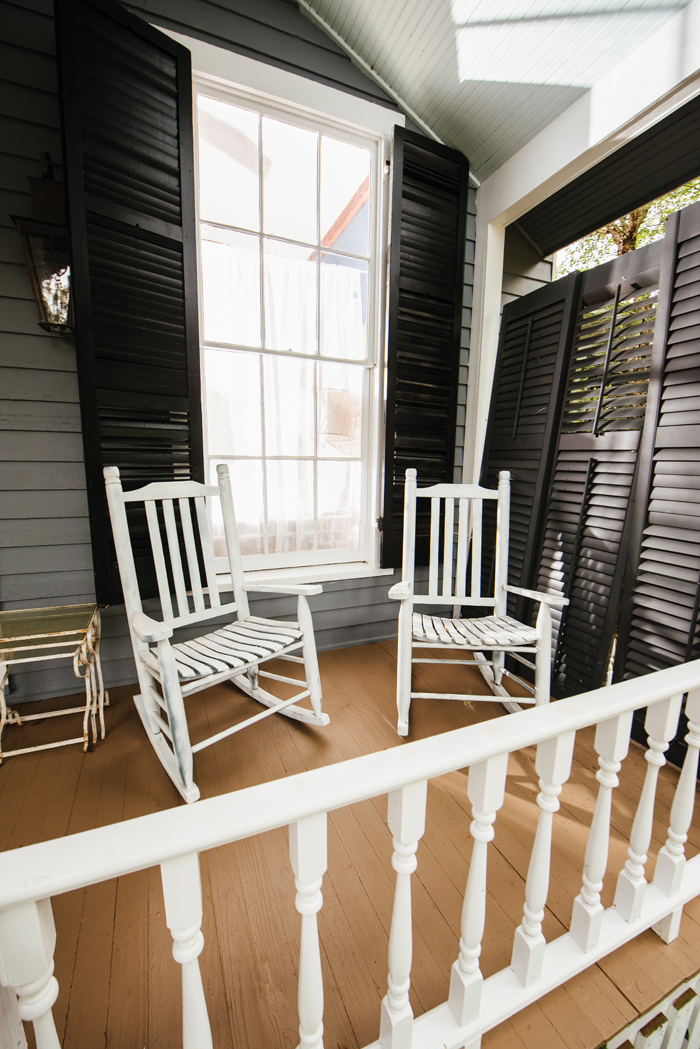
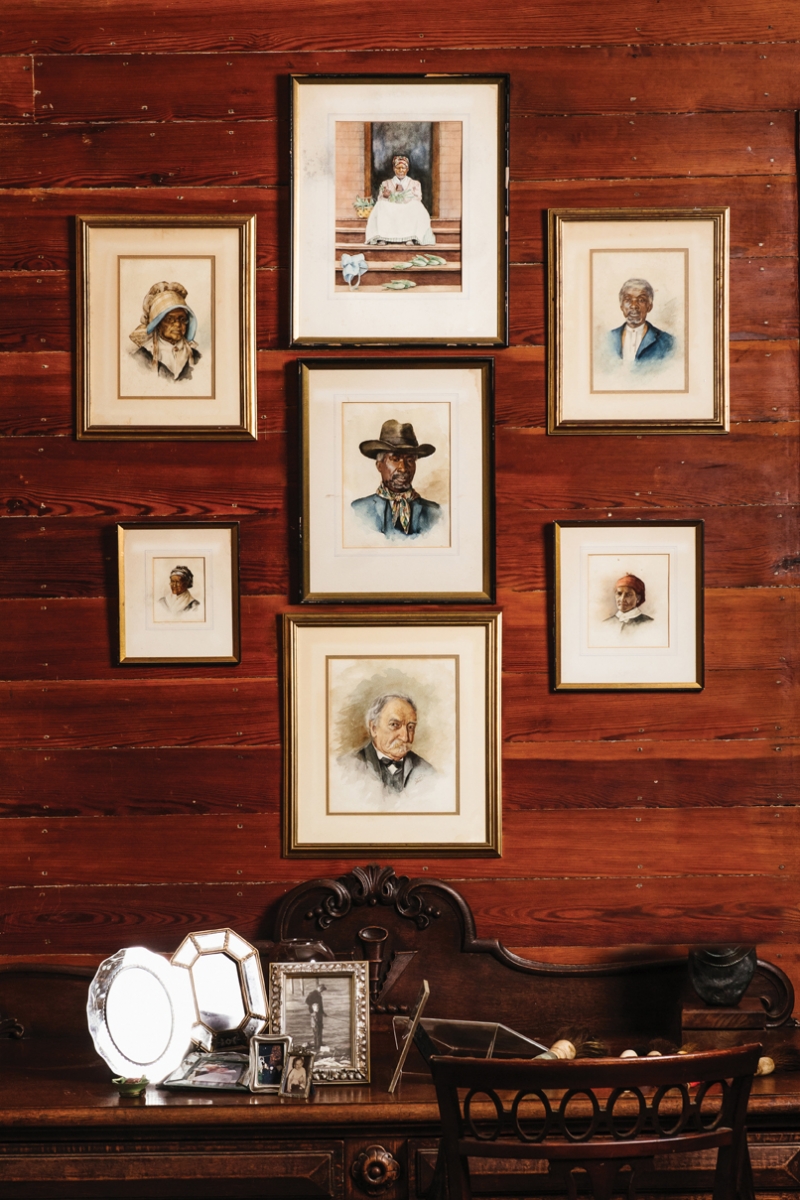
ABOVE LEFT White porch rockers beckon guests to sit a spell.
ABOVE RIGHT Still as expressive and treasured as ever, Aunt Grace’s paintings date back to the turn of the 20th century and adorn the home’s rich paneled walls.

ABOVE With inviting old and new furnishings and modern artwork, the living area easily brings the historic home into the present, creating a timeless, cohesive feel.
Artist in Residence
Portraits of other notable residents, attended with care by Robbie Bacon and his wife, Amanda, offer a testament to the home’s rich and colorful past.
“That’s my great-great-grandfather, Daniel Perrin Bestor, ” Robbie explains, nodding toward a bearded visage in the den. This family patriarch was a minister-educator who came from Connecticut in 1822 to become the first headmaster of Athens Female Academy (the oldest institution of higher learning in the state of Alabama). As Robbie is telling the story, dogs and cats of multiple colors and sizes wander around the room, making themselves at home on the furniture.
There seems to be something appropriate about that. A mixture of informality and grace has marked the house ever since the Bestors bought it in 1899. The first Bestor house owner, also Daniel Perrin Bestor (the son of the aforementioned educator), was a former Mobile mayor and prominent attorney who used the manor as a summer retreat. He shared it with his family members, including his daughter, Grace Tarleton Bestor, who made her mark as a turn-of-the-century artist.
Seven of Grace’s watercolors hang on the wall. The subject matter is surprising. Most portrait painters in her day chose prominent people for their canvases: It was simply more lucrative. But Grace selected ordinary people from the Southern countryside. Six of her seven portraits are of blacks, perhaps former slaves, whose faces are defined by dignity and strength.
Sadly, the artistic career of “Aunt Grace, ” as the family calls her, ended abruptly on a Friday morning in 1911. On August 18, she died in childbirth at the home in Point Clear. She had been married less than a year to William Bullock Inge, and a summer of anticipation – of newlywed walks along the shore and the birth of a child – turned suddenly to mourning.
Some people have claimed, in the years since her death, that the ghost of Aunt Grace still haunts the Bestor House; Amanda, for one, is convinced. She remembers the night 11 years ago when she sat up late with her infant son.
“I had Stillwell in my arms, and he was fussing and restless, ” she recalls. “It was just before midnight. I don’t know how to describe her. I just knew a presence was there. I knew it was a woman. She moved from the dining room toward the front doors and stopped and looked over at me rocking Stillwell. I thought I was imagining things, but at the same time, I knew I was not. Then, it was as if she came and stood by me and looked down at us sitting there, and everything was calmed. Stillwell got quiet. I was less anxious, and then she was gone.”
Amanda continues, “I have since seen her a few more times, always fleetingly, always when I am up late at night and everyone else is sleeping. It always takes me a bit by surprise, but always makes me feel peaceful. I like knowing she is here.”
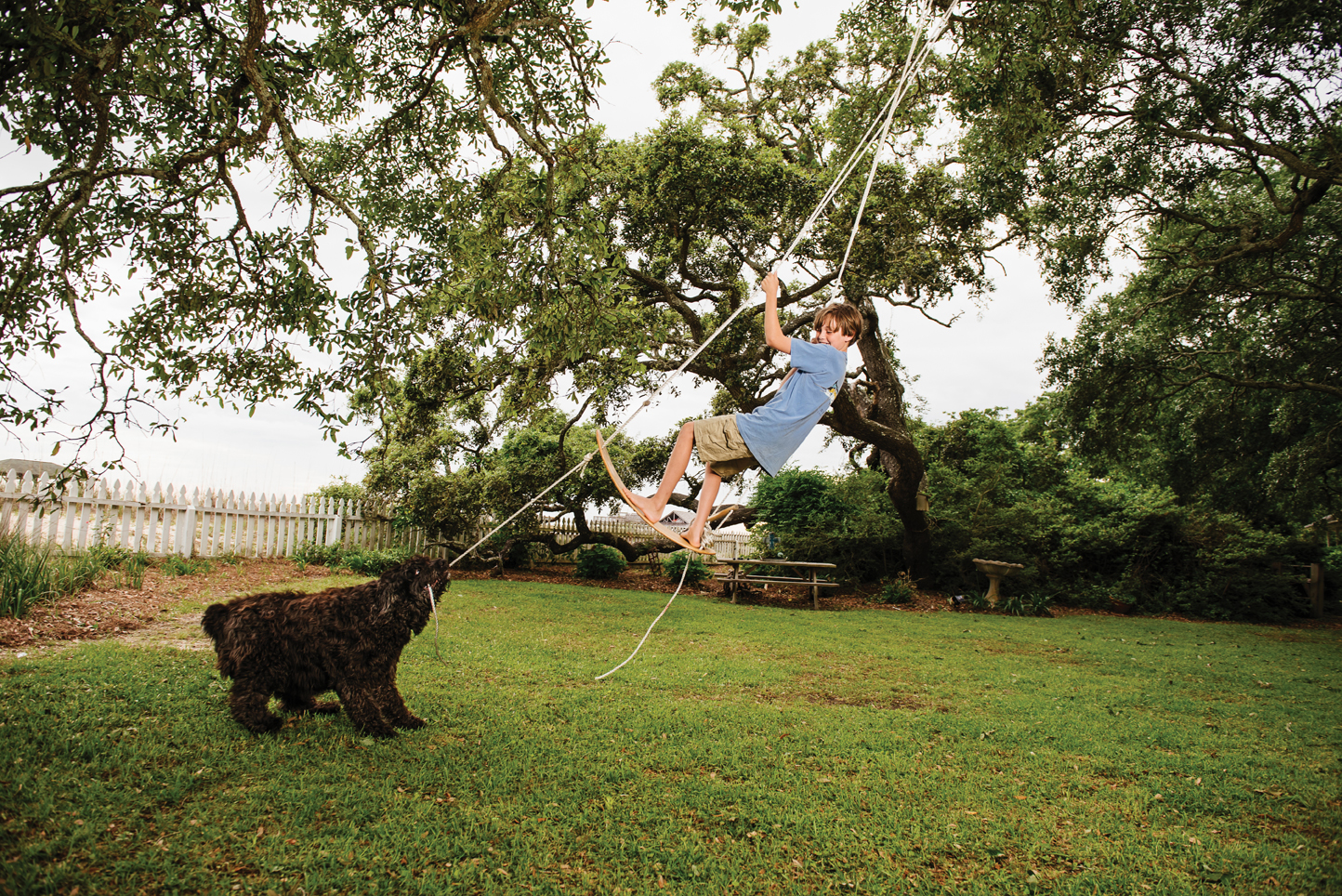
ABOVE Today, Amanda and Robbie Bacon’s son, Stillwell, is the fifth generation to call it home.
Growing Up at Bestor House
For Robbie, the ghost of Aunt Grace is simply one more piece of the home’s lore. As a boy, he spent his summers at the Bestor House, arriving as soon as school let out and not returning to his home in Mobile until the end of August.
“I loved it here, ” he remembers. “I spent most of my time outdoors. Water-skied, fished, went floundering at night. We didn’t have air conditioning or heat, so we never stayed down here in the winter, and by the time August rolled around, it started getting a little harder to sleep with just an oscillating fan to keep you cool. But, to me, it was perfect.”

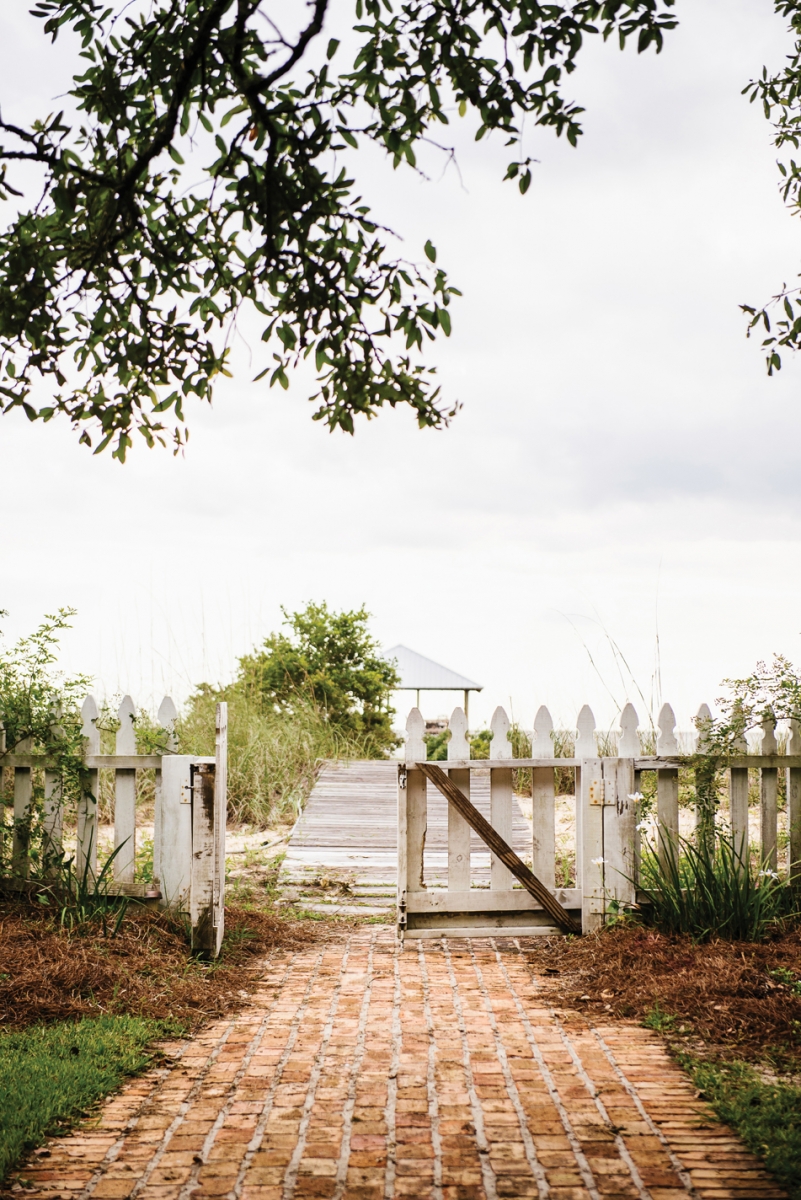
ABOVE LEFT Stillwell Bacon throws his cast net at the Bestor Bay House.
ABOVE RIGHT In 2011 and 2012, the Bestor property provided the backdrop for the CMT reality TV dating show “Sweet Home Alabama, ” and the wharf became the site of many a romantic conversation.
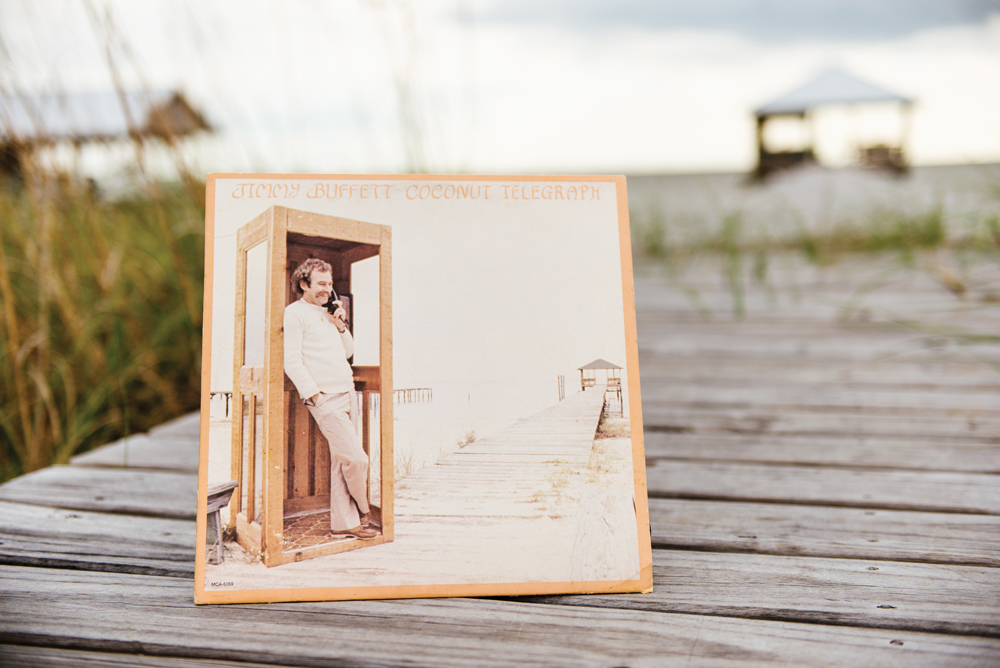
ABOVE One of Bestor House’s famous guests Jimmy Buffett shot his album cover for “Coconut Telegraph” at the house’s wharf, a landmark easily recognized even decades later. Album courtesy of Mobile Records.
Famous Guests
Two decades later, after a brief career as a forester and various far-flung travels around the world, which took him from New Zealand to the Arctic Circle in Scandinavia, Bacon returned to Point Clear and remodeled the house for year-round living. “I was single back in those days, ” he says with a smile. “A lot of stuff went on here.”
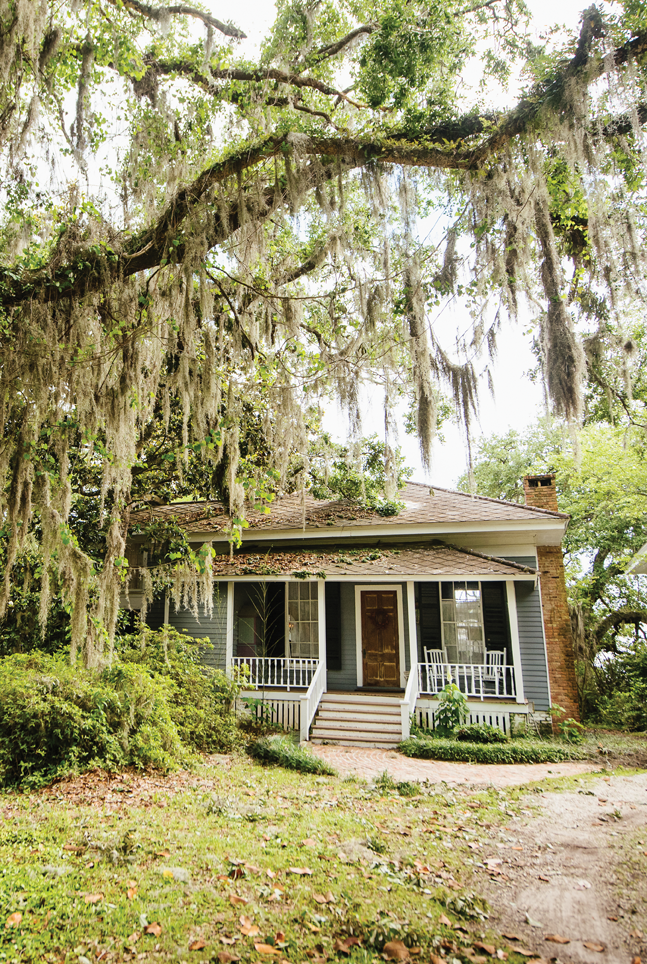
|
For one thing, Winston Groom returned to Alabama in the 1980s to make his mark as a novelist after a journalism career in the Northeast and rented Bacon’s guesthouse. “It used to be the servants’ quarters, ” Robbie says. “Winston and I had gotten to be good friends, and I’d see him out there pounding away on a typewriter. At one point, he showed me a rough draft of a manuscript he had been working on. It was ‘Forrest Gump.’”
“Jimmy Buffett and Winston were also friends, and Jimmy would show up every now and then. The cover for his album, ‘Coconut Telegraph, ’ was taken on this wharf, ” Robbie adds.
The Bestor House hosted another famous guest in the 1970s and early ’80s: Robert F. Kennedy Jr. Robbie says he got to know Kennedy through a mutual friend who was a professional bull rider in Lowndes County, and for a while at least, Robbie remembers Robbie and Bobby had a fine time “chasing women” and driving fast cars.
On at least one occasion, the paparazzi descended on the Bestor House in search of Kennedy. Word got out on an April morning that Bobby had dived off the Bacons’ wharf and broken his neck in the shallow waters of Mobile Bay. Fortunately, the fracture was minor but forced Kennedy to wear a neck brace, which he disliked.
But Kennedy’s love of the water soon led him to the Waterkeeper Alliance, an international network of environmental groups seeking to protect the rivers and bays of the world. That work has occasionally brought him back to Mobile, including fleeting visits to the Bestor House where life goes on — quieter, perhaps, than it has in the past.
But there are still those moments when the spotlight intrudes. Country Music Television (CMT) chose the house for two seasons of its reality series “Sweet Home Alabama.” However, the photogenic stars weren’t the only beauties to stay here. In the 1980s, Yolande Betbeze, a former Miss America, Parisian ambassador and civil rights activist, visited the home for an extended period of time. The Bestor House was also the setting for a 1982 Hollywood movie called “The End of August, ” an adaptation of Kate Chopin’s iconic Southern novel “The Awakening.” Fittingly, the book set on the Gulf of Mexico was written in 1898, the year before Daniel Perrin Bestor bought his house at Point Clear. In the novel, Chopin wrote in words that resonate on Mobile Bay, “The voice of the sea speaks to the soul.” If walls could talk, the same could be said for the storied, old Bestor House.
text by Frye Gaillard • photos by Chad Riley





